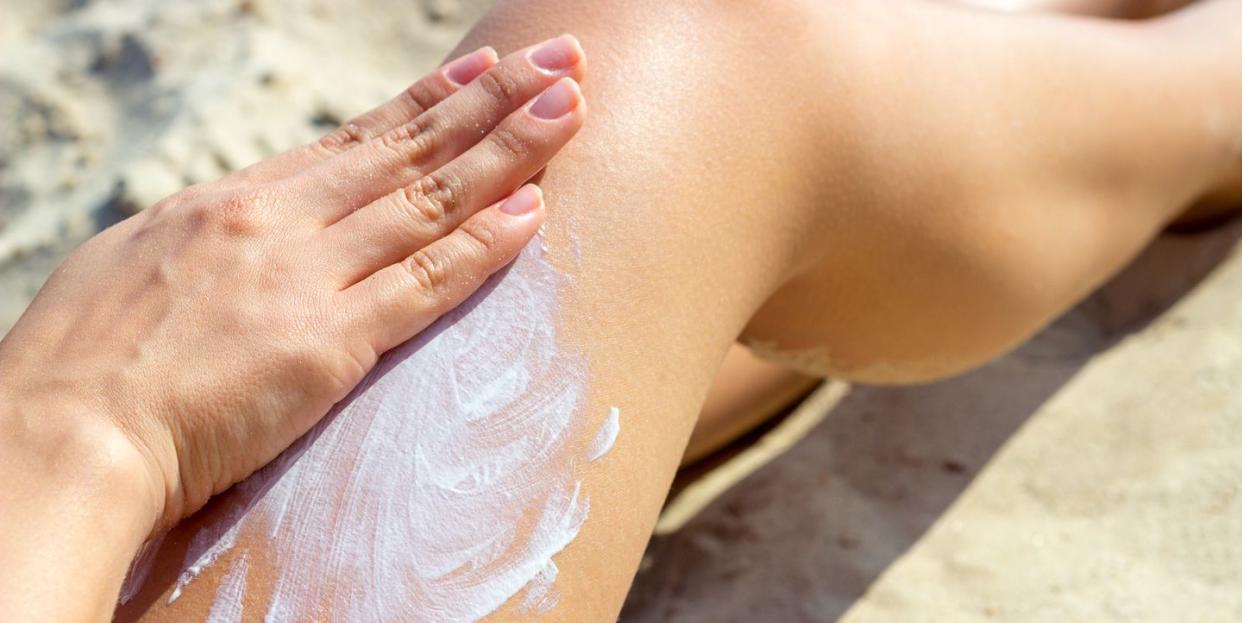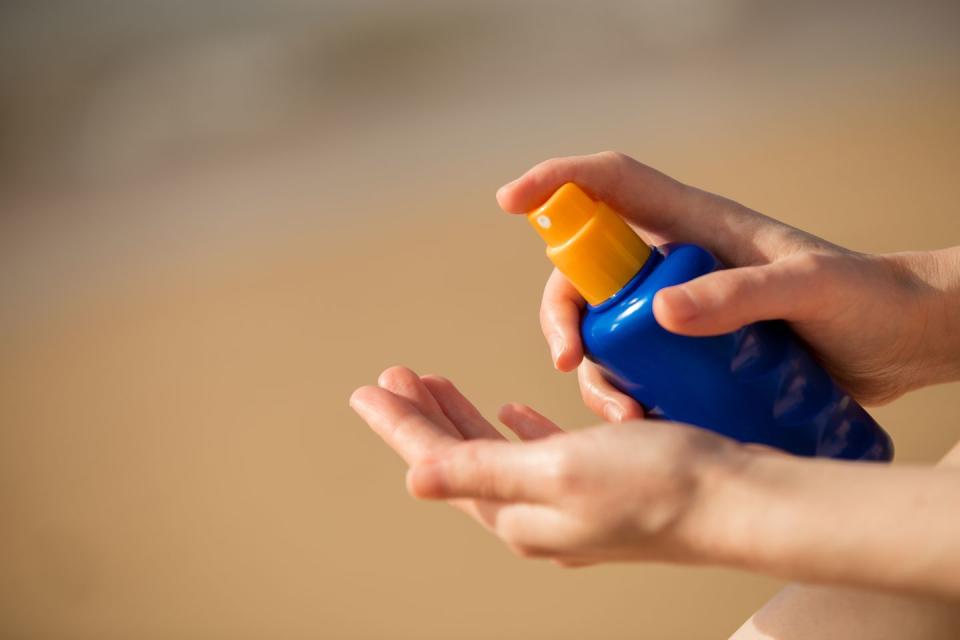What You Need to Know About the New FDA Sunscreen Regulations

In 2019, the FDA proposed big changes to sunscreen regulations.
However, the new rules on chemical sunscreen labels are still not yet finalized as the federal agency seeks additional information.
Only physical sunscreens with the active ingredients zinc oxide or titanium dioxide are recognized as generally safe right now.
UPDATE: 6/10/2020: To improve the quality, safety and effectiveness of sunscreens, the
U.S. Food and Drug Administration proposed a new set of rules and regulations in February 2019. While those rules, outlined below, were not finalized by the end of 2019 as originally planned, here is what has been communicated since then:
In May 2019, the FDA reported on a pilot study showing that four chemical sunscreen actives (avobenzone, oxybenzone, octocrylene and ecamsule) are absorbed into the body’s blood stream when sunscreens containing such ingredients are used as intended.
In January 2020, the FDA reported on the results of an extended clinical study showing that six chemical sunscreen actives (avobenzone, oxybenzone, octocrylene, homosalate, octisalate and octinoxate) available in four commercially available sunscreen products (lotion, aerosol spray, non-aerosol spray and pump spray) enter the bloodstream even after a single application and can remain in the body for extended periods of time.
The FDA believes that the outcomes of these two studies are in line with their proposal and support their ask for additional safety data on those 12 chemical sunscreen actives. Given the recognized health benefits of sunscreen use, the FDA continues to advise the public to use sunscreen in conjunction with other sun safety measures such as protective clothing covering the arms, torso and legs, wearing sunglasses and hats, as well as seeking shade during peak sunlight hours.
ORIGINAL 2/22/2019: The U.S. Food and Drug Administration proposed new regulations for sunscreen yesterday, which could majorly change what you'll find in the SPF aisle in the months to come.
Out of the 16 "approved" active ingredients used in sunscreen right now, the FDA stated only two are generally recognized as safe and effective (GRASE), 12 require more data, and two should no longer be used at all. Other potential changes include what types of sunscreens are safe to use and how they're labeled.
The FDA set a November deadline for releasing a monograph, a.k.a. new clear-cut rules for the sunscreen industry, so nothing is quite final yet.
Here's exactly what the announcement said, and what it means in plain English:
Changes for Sunscreen Ingredients
There are currently 16 active ingredients allowed in sunscreen. The new announcement proposes that:
Only two ingredients – zinc oxide and titanium dioxide – are generally recognized safe and effective.
Two ingredients – PABA and trolamine salicylate – are no longer generally recognized safe.
There isn't enough information to decide whether the remaining 12 are safe and effective at this time. The FDA is currently asking the industry for additional data.
What It Means
The two ingredients generally recognized as safe — zinc oxide and titanium dioxide — are both mineral sunscreens that work as physical blockers on the surface of your skin, explains Birnur Aral, Ph.D., Director of the Health, Beauty & Environmental Sciences Lab at the Good Housekeeping Institute.
The other active ingredients in question are all chemical sunscreens, which typically leave less of a white residue. "Chemical sunscreens work on the principle of absorbing and dissipating UV rays," she says.
The Environmental Working Group has advocated against one chemical ingredient particular. "For a decade, EWG has worked to raise concerns about sunscreens with oxybenzone, which is found in nearly all Americans, detected in breast milk, and potentially causing endocrine disruption," David Andrews, Ph.D., senior scientist at EWG, said in a statement.
The two no longer considered safe — PABA and trolamine salicylate — have not appeared in products for years, Dr. Andrews told Outside.

Changes for Sunscreen Types
The announcement also called for exploring the use of sunscreen sprays, oils, lotions, creams, gels, butters, pastes, ointments, and sticks.
The FDA may okay powders as well, but stated it has not received enough data on sunscreens wipes, towelettes, body washes, shampoos and other forms to include them in the new rules. It did, however, propose no longer recognizing products that combine sunscreens with insect repellents as safe and effective.
What It Means
Lotions and sprays dominate sunscreen sales right now, making up more than 80% of the market, according to a 2018 study. However, even though about 99% of dermatologists recommend sunscreen to their patients, only 69% recommend sprays, a 2016 survey found.
With sprays, it's harder to know if you've applied enough and there's a bigger risk of inhalation, Raman Madan, M.D., a board-certified dermatologist with Northwell Health, previously told GoodHousekeeping.com. As of right now, the American Academy of Dermatology (AAD) advises never spraying sunscreen directly near your face or mouth for this reason.
Changes for SPF Ratings
The FDA also suggested raising the maximum SPF value allowed on labels from 50+ to 60+. An additional proposal would require that as SPF increases, the amount of protection against UVA radiation also increases.
What It Means
Even though you could see SPF 60 on new labels, it doesn't mean the formula has twice as much protection as SPF 30. In fact, when properly applied, SPF 30 will block about 97% of the harmful rays that cause sunburn. "Higher-number SPFs block slightly more of the sun's UVB rays, but no sunscreen can block 100% of the sun's UVB rays," the AAD states.
Changing the definition of SPF to also include UVA means that you'll get more protection against the rays that primarily cause skin aging, not just the ones that that cause sunburns.
Changes for Sunscreen Labels
Finally, the FDA suggested changing the requirements for SPF labels. These would include:
Putting the active ingredients on the front of the package, like other OTC drugs
Adding an alert on the front if sunscreen has not been shown to help prevent skin cancer
Revising formats for SPF, broad spectrum, and water resistance statements
What It Means
These changes would make it easier for you to know that you're buying a sunscreen that works — not just marketing jargon. Putting the active ingredients on the front could help you distinguish between physical and chemical sunscreens, if any chemical ingredients do end up getting recognized as safe.
The FDA has already stopped manufacturers from calling their sunscreens "waterproof" because there's no such thing — sweat and water will wash any formula away from skin. Currently, "water resistant" means it stays effective for 40 minutes in the water. "Very water resistant" means it lasts for about 80 minutes water, but these definitions could change depending on the information the FDA gathers over the next few months.
What's Happening Next
The FDA won't release definitive rules until the end of November, so this summer we're all in a bit of a limbo. "Sunscreen science is ever evolving," says Steven Q. Wang, M.D., a board-certified dermatologist at Memorial Sloan-Kettering Cancer Center. "The safety and efficacy of existing sunscreens should be reviewed from time to time to reflect our most current collective scientific understanding."
Dr. Aral believes many companies will or have already started revising their products based on the proposed changes so far. "The industry is going to likely to start coming out with all mineral formulas," she predicts.
In the meantime, it's still important to protect your skin from harmful UV rays. "As a first line of defense against sunburn and sun damage, I advise my patients to avoid sun exposure by staying in the shade and wearing clothing, followed by sunscreen use," Dr. Wang says. "For those consumers who are concerned about hormonal disruption, specifically for children, I recommend sunscreens with mineral ingredients such as zinc oxide and titanium dioxide."
For more information, you can contact the FDA at 888-INFO-FDA.
You Might Also Like

